The National Library of Medicine suggested that we humans have “an innate biological and genetic connection” to nature, meaning we have a psychological and emotional need to experience and care for life. This is known as the biophilia hypothesis.
We evolved with nature by interacting with it, and continuing to do so can improve our physical and psychological well being.
Unfortunately, our lives tend to be packed. The majority of our daily activities happen indoors, limiting our ability to enjoy nature outdoors.
So how do we solve this problem?
It’s simple — bring nature indoors.
By keeping even one plant in your bedroom, office, or general living space, you can improve focus, decrease depressive moods, and lessen symptoms of anxiety.
They provide comfort, relaxing our often busy and overworked minds.
Not only do plants ease our minds, they can help improve our physical health.
We have a symbiotic relationship with plants, meaning existing near one another is mutually beneficial. We provide carbon dioxide for them to photosynthesize, resulting in a consistent production of purified oxygen that supports us humans.
Plants also work as dehumidifiers by absorbing water through their leaves, helping to regulate humidity levels and promote fresh air in our homes.
Aside from the positive psychological and physical effects of houseplants, they can also make rooms aesthetically pleasing by providing bursts of color and unique silhouettes. Any visible soil can also be decorated with crystals, rocks, and even photos.
Plants are undoubtedly necessary in every home and indoor space. But each plant is a unique life that requires specific and sometimes difficult care. To start your houseplant journey, it is important to find simple and low-maintenance plants.
This piece contains terminology that those who are new to caring for plants may not know. Please see the index at the bottom of this article for definitions!
Christmas Cactus
Schlumbergera truncata
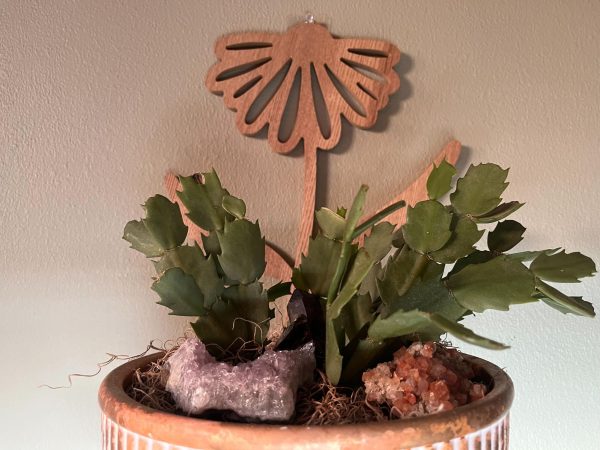
This plant typically blooms between September and February, producing a vibrant pink flower. It is also possible for small, circular, red seed pods to sprout. This plant can grow up to six to 12 inches tall and 12 to 24 inches wide.
It is known for having bunches of long, segmented phylloclades.
The Christmas cactus prefers bright, indirect light and should be kept away from direct rays of light. When exposed to direct light, it can prevent flowering and result in drooping leaves.
While most cacti prefer consistent moisture, the Christmas cactus prefers its soil to dry halfway down its pot before being watered again, so it should be watered every one to two weeks. Christmas cacti also prefer being watered from the bottom, which can be done by placing the pot’s drainage holes into a deep, water-filled dish and letting it soak for 30 minutes.
Golden Pothos
Epipremnum aureum
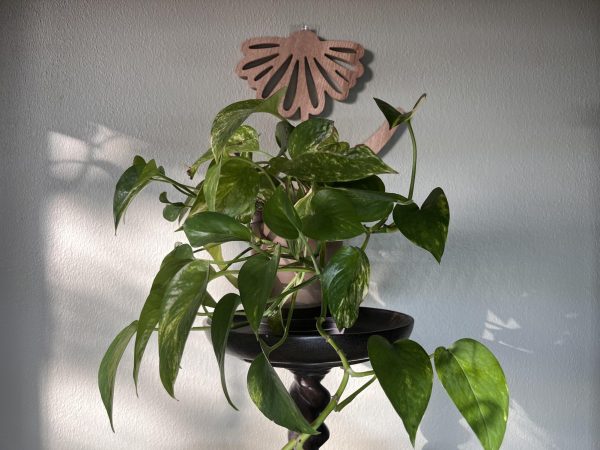
This plant does not flower and can grow up to 10 feet long indoors.
When ingested, this plant is toxic but non-lethal to humans and pets, so keeping this plant out of reach of any kids or animals is important.
It is known for its heart-shaped leaves and distinct splotches of pale yellow scattered on its leaves.
This specific species of pothos prefers bright, indirect light but can still thrive in low-light conditions. The only downside to keeping one in low light is the loss of its pale yellow marks.
You should water your golden pothos every one to two weeks, allowing its soil to dry completely between watering.
In plant shops, it’s common to see a multitude of golden pothos cuttings planted in one pot to create a fuller look, so as it grows, it is important to repot half the cuttings to give the roots sufficient space to grow.
When cared for properly, this plant is fast-growing. It loves to hang and climb, so suspending it from your ceiling or incorporating a moss pole in its pot will ensure it can grow properly.
Snake Plant
Dracaena trifasciata
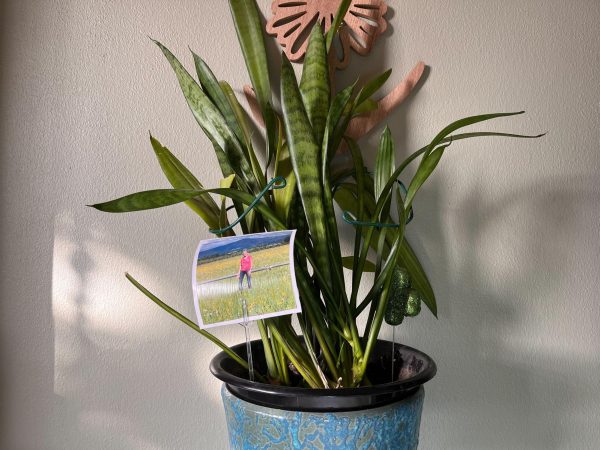
Snake plants can bloom small white flowers with a sweet scent in spring, but rarely flowers while indoors. It can grow to around four feet tall.
This plant, when consumed, is mildly toxic to humans and pets, so it should be kept out of reach of children and animals who have a tendency to pick at your plant’s leaves. It can also irritate the skin when touched.
It is known for its scaly splotches and the thin, yellow stripes that line its thick upright leaves.
Snake plants enjoy bright, indirect sunlight but can handle low-light environments very well. They can also survive under solely fluorescent lights, making it a perfect office plant.
You should water your snake plant three times per month or when the soil has completely dried out. It enjoys fast-draining soil, and should be kept in a pot with multiple drainage holes.
Snake plants are slow-growing and can tolerate a crowded pot. If it lives in bright light, it won’t need to be repotted for four years.
Spider Plant
Chlorophytum comosum

Indoor spider plants produce small, white flowers that can easily be missed in this plant’s abundant foliage.
It is known for its mounds of long, thin leaves with thick white stripes down its center. When matured, spider plants produce a long stem called a stolon, that produces baby spider plants known as spiderettes that can easily be propagated.
Spider plants can grow in low light but will only be able to produce their signature spiderettes in bright, indirect light.
They should be watered once a week in order to keep the soil moist. These plants are resilient but can only flourish if watered properly.
This is a fast-growing plant, but it enjoys a slightly crowded pot, leaving it only needing to be repotted every couple of years.
ZZ Plant
Zamioculcas zamiifolia
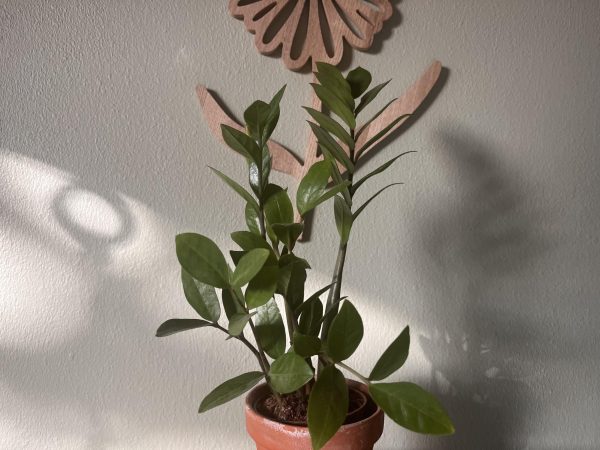
After multiple years of good care, they may mature and produce small yellow flowers at the base of their leaves. This plant can grow up to two to four feet tall.
This plant is highly toxic to humans and pets, and ingesting it can cause immediate pain and discomfort.
It is known for having small, waxy oval leaves that line its thick stalk.
This plant prefers medium to bright indirect light, but can easily survive in low light. Every couple weeks or so you should gently wipe any dust off its leaves to ensure it can soak in light and photosynthesize properly.
You should water your ZZ plant every two to three weeks, so the soil can fully dry out between waterings. If your plant is exposed to high amounts of light, waterings should be closer together.
The ZZ plant is incredibly hardy and can survive neglectful conditions, making it perfect for dark rooms and forgetful owners.
Hopefully, this can help you start an enjoyable journey of plant discovery in your home. Don’t be afraid to start caring for, decorating with, and learning more about these beautiful organisms as soon as you can.
If any human ingests a toxic plant, please call the nation’s poison helpline at 1-800-222-1222. If a pet ingests a toxic plant, please call the Pet Poison Helpline at 800-213-6680 or your pet’s veterinarian.



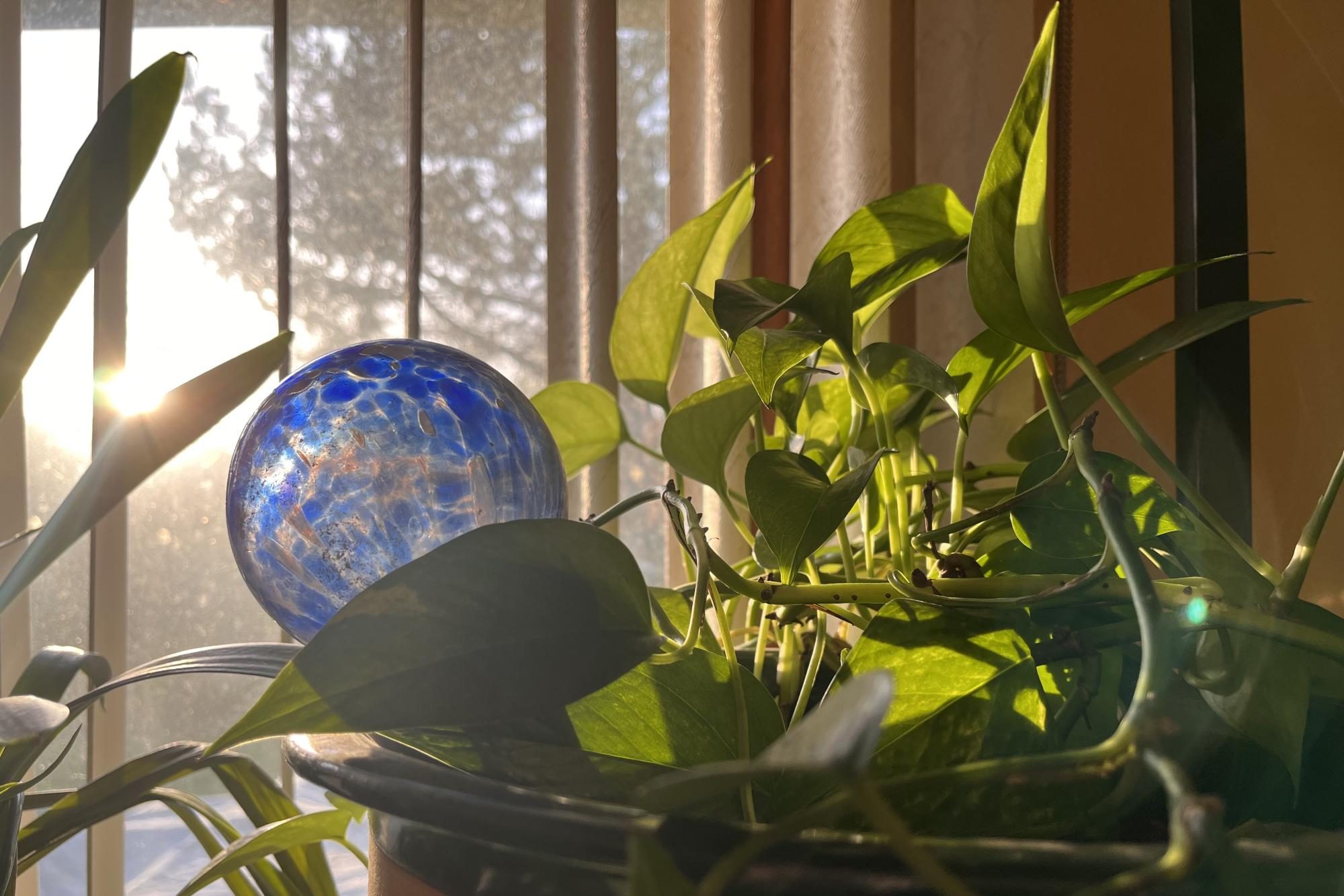







Chris Babinec • Mar 5, 2025 at 12:46 pm
I LOVE this article! It is chock full of good information, and it is written with heart and passion. The author is both gently encouraging and I imagine leading by her own example. Even though I already knew some of the benefits of having plants indoors, the way this article is written, the helpful links, and the substantial nature of the piece made it well worth the read. Thank you!